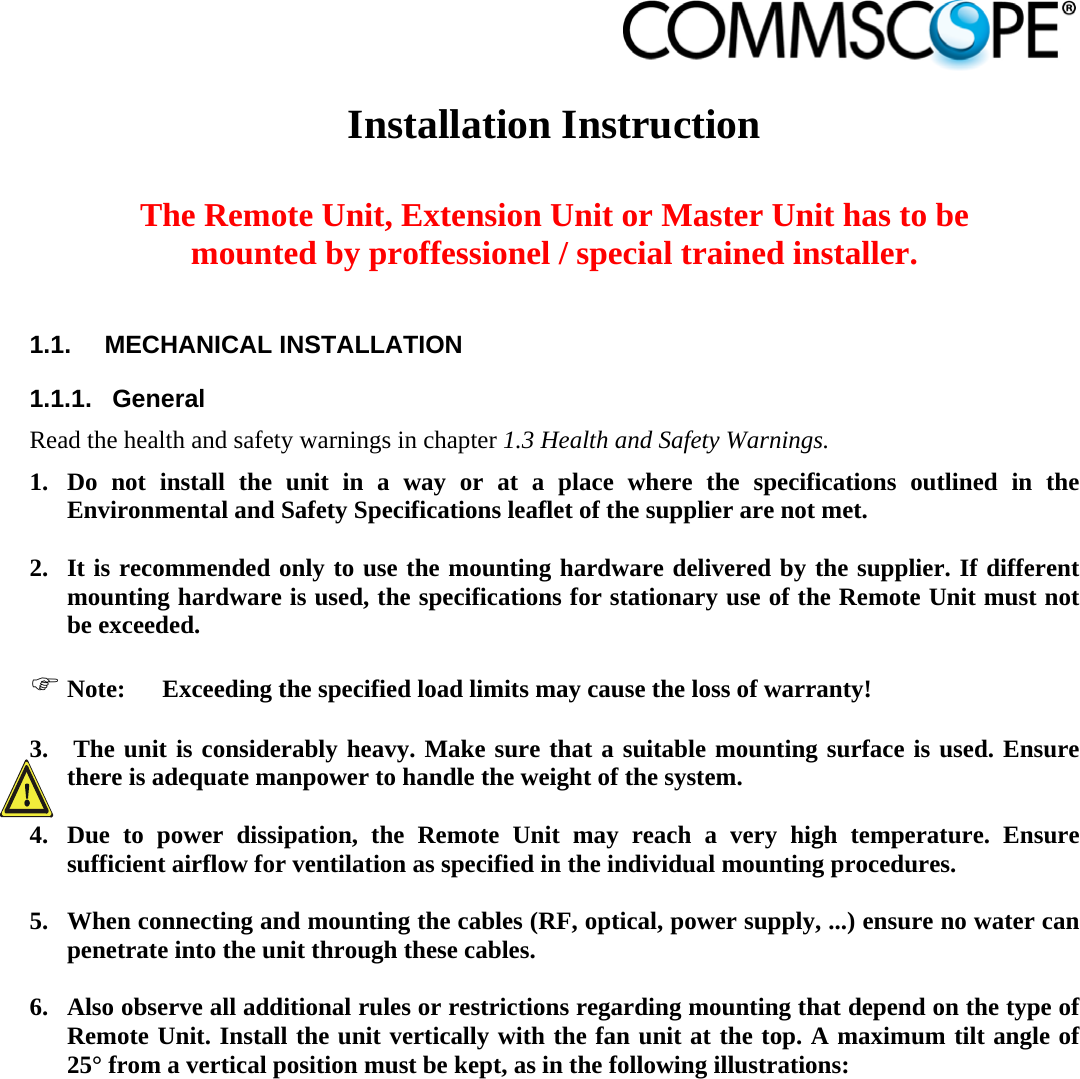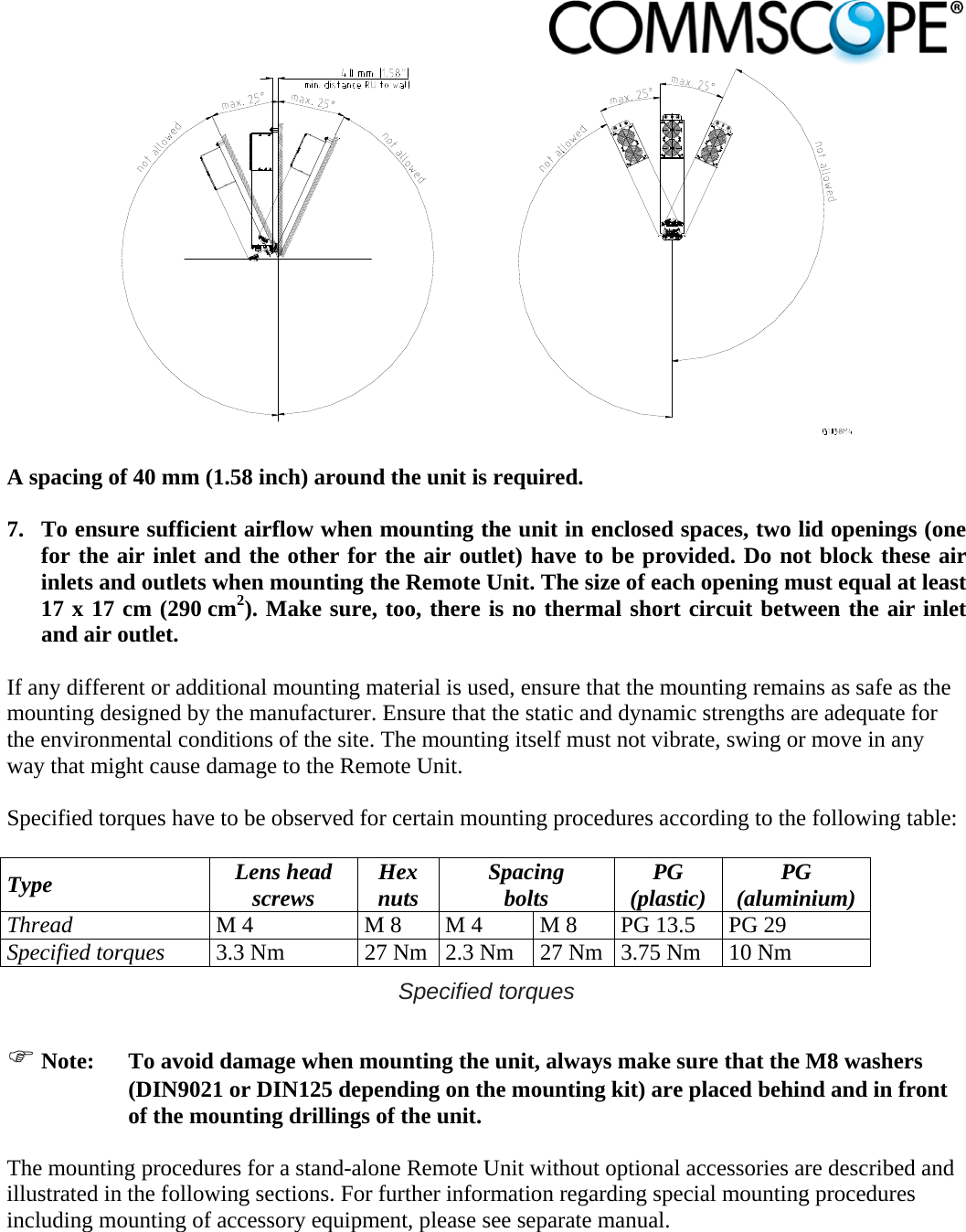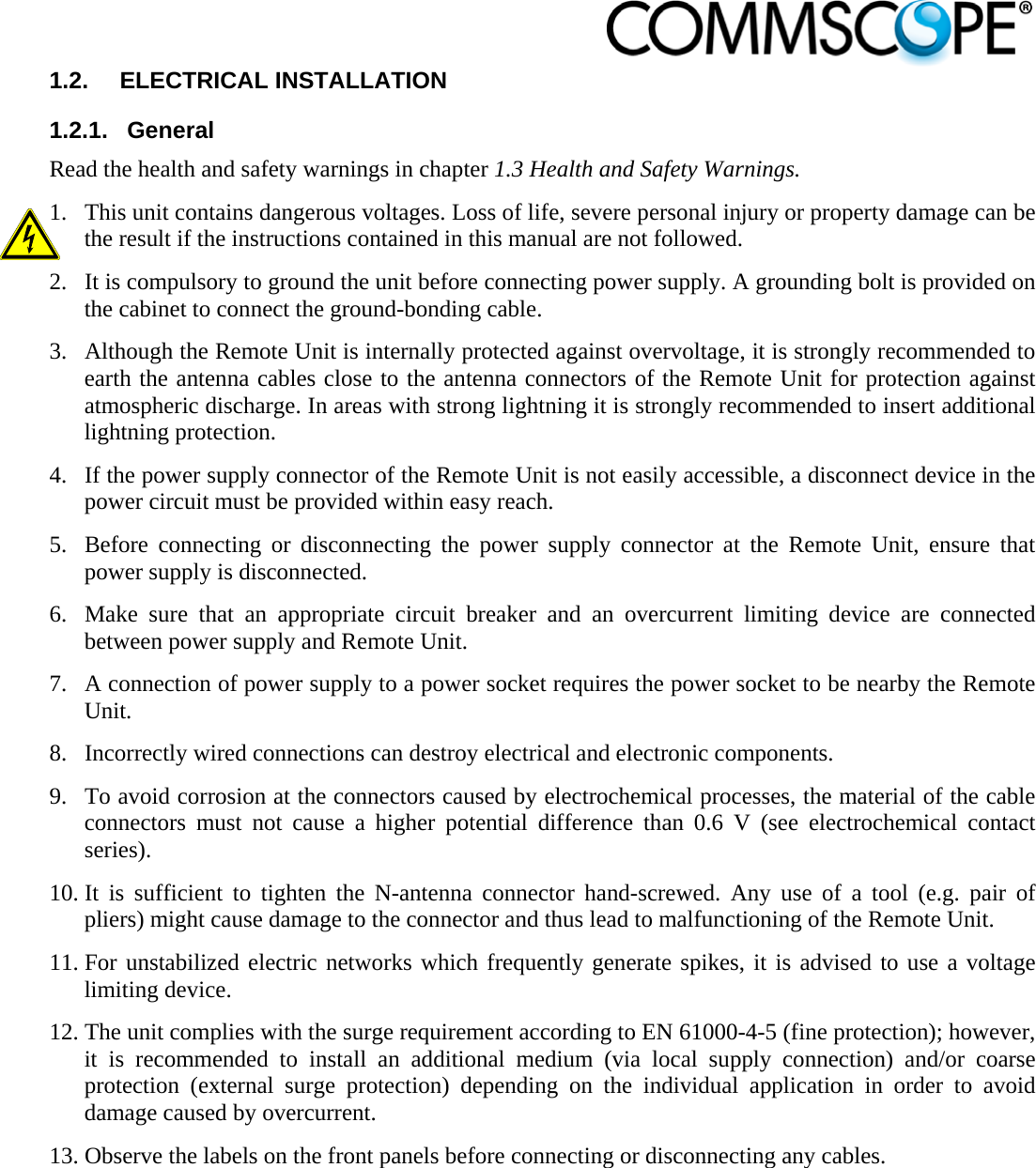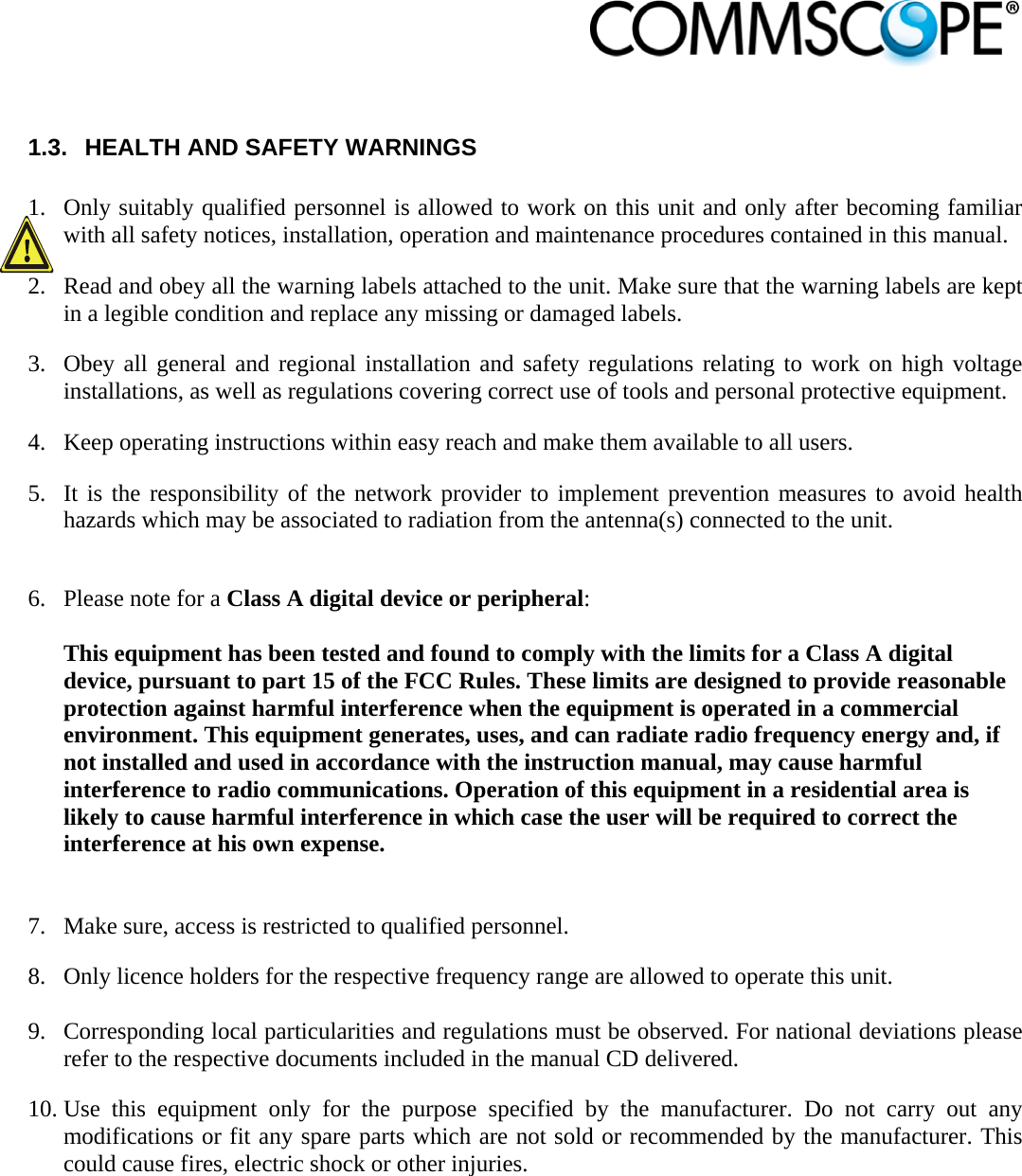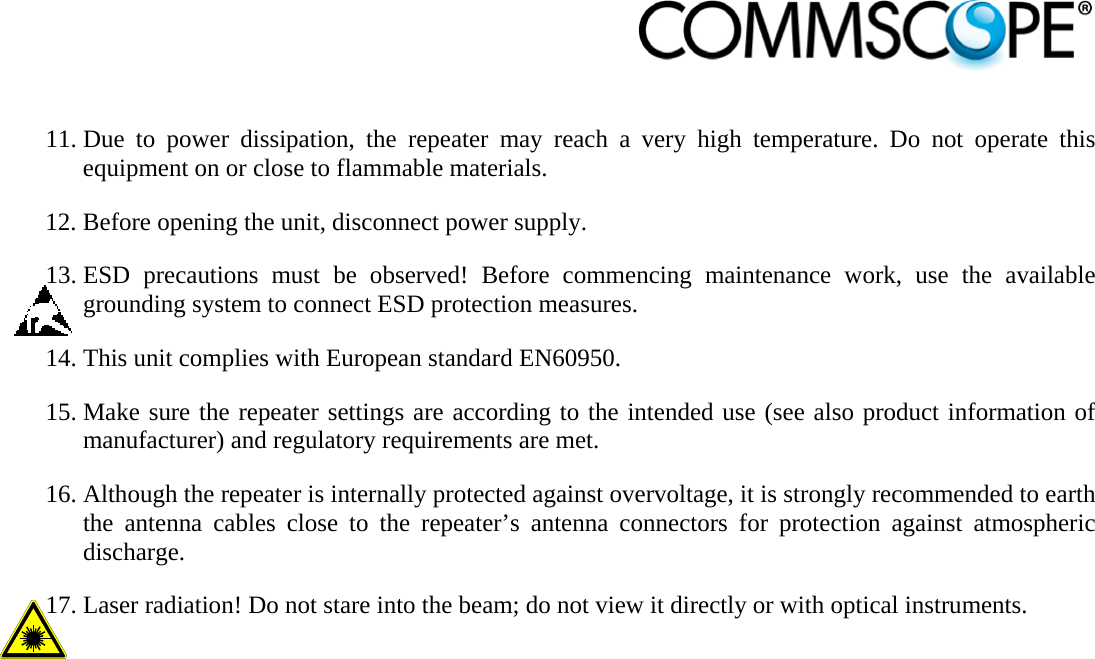Andrew Wireless System M71719P Optical ION-M Remote Unit for cellular systems User Manual Installation Instruction
Andrew Wireless System Optical ION-M Remote Unit for cellular systems Installation Instruction
Contents
- 1. installation instruction
- 2. user manual
installation instruction
